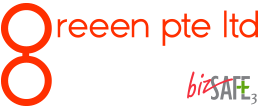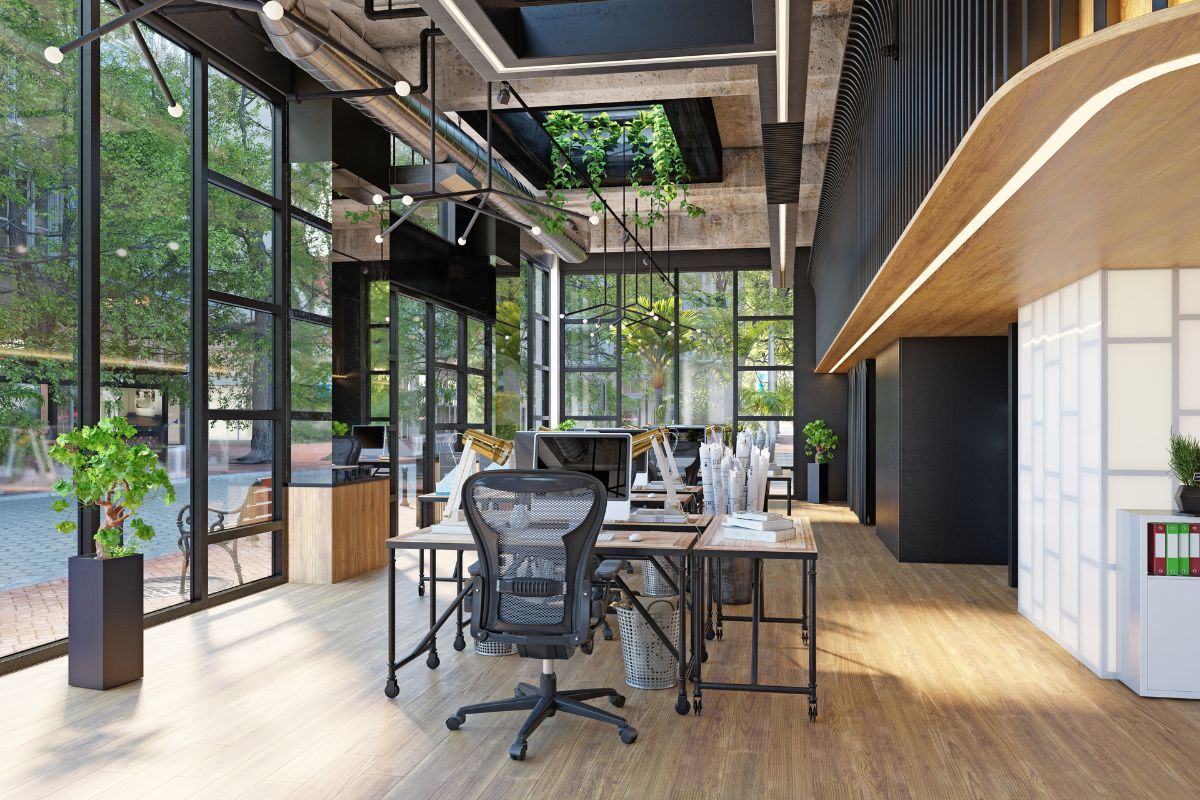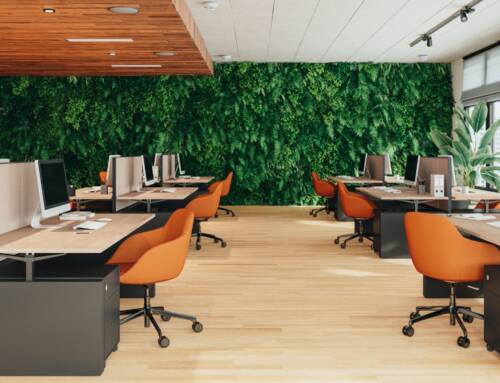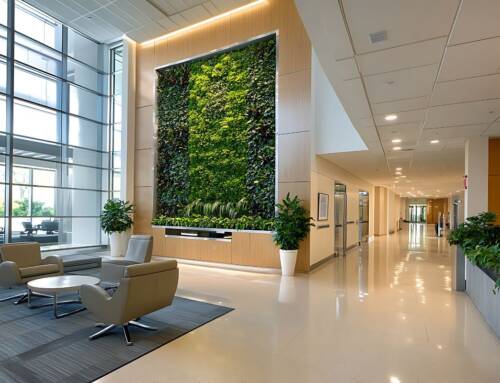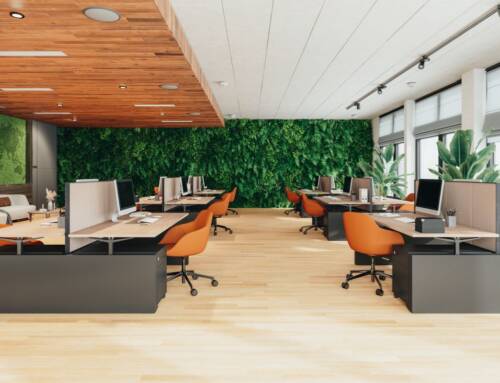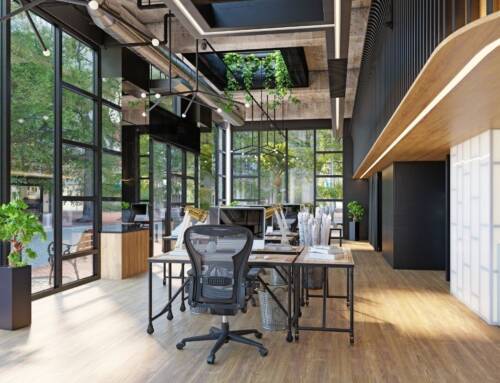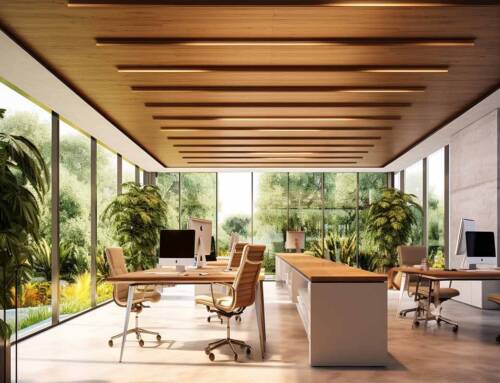Singapore’s commercial property market shows no signs of slowing down, placing increasing pressure on businesses to maximise their workspace investments. With office renovation costs ranging from S$300 to over S$1,000 per square metre, creating an inspiring workplace and maintaining budget discipline has become essential for business success.
Forward-thinking companies across Singapore have discovered that strategic design choices can transform ordinary offices into productive, engaging environments without requiring substantial capital outlay. This comprehensive guide provides cost-effective strategies that help businesses achieve professional, modern aesthetics at realistic price points.
Current Design Trends Delivering Value in Singapore
Flexible Workspace Configurations
Dynamic hot-desking systems are replacing traditional assigned seating arrangements. These systems are more flexible and cost-effective. This method cuts down on the number of workstations needed and makes the workplace more collaborative and independent.
The best implementations provide separate places for different activities, such as quiet rooms for focused work, collaboration spaces with interactive tools, and casual gathering areas. Modular furniture systems, such mobile tables, stackable chairs, and partitions that can be rearranged, make it easier to change things around as business needs change.
Natural Elements That Thrive in Singapore’s Climate
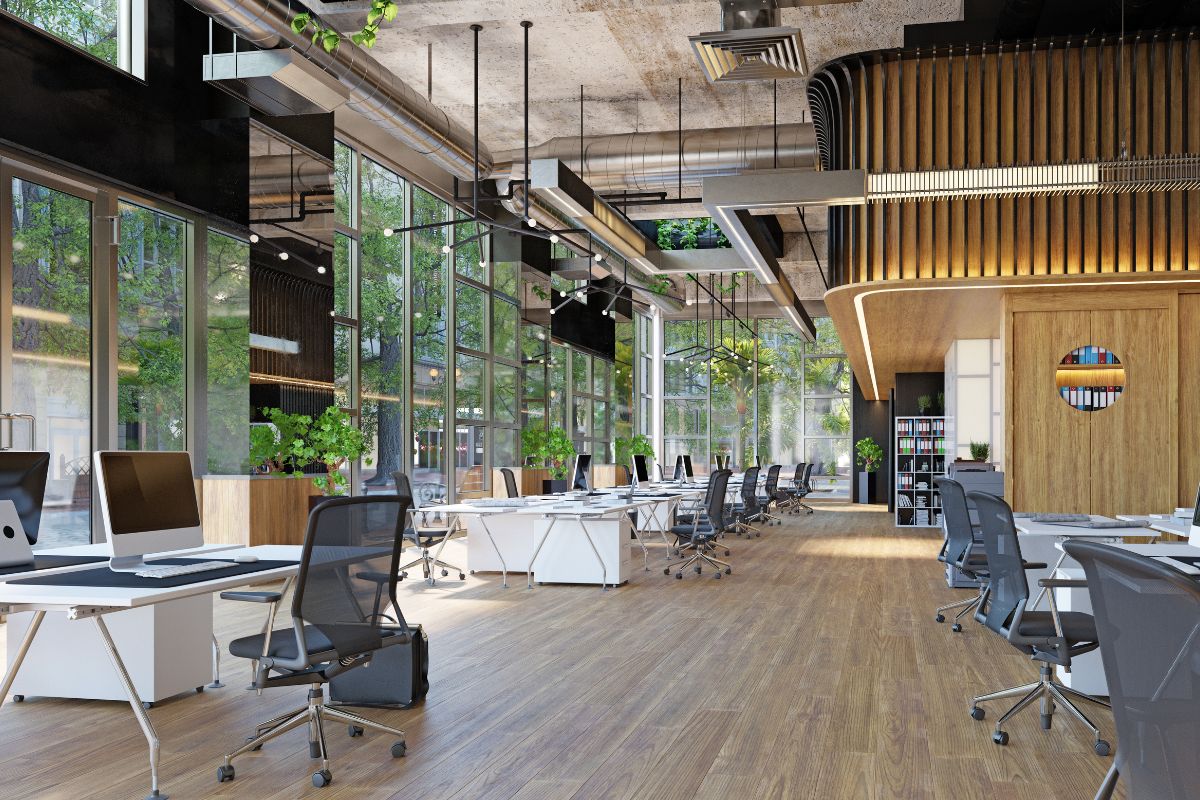
The integration of natural elements, commonly referred to as biophilic design, has gained significant traction due to its proven impact on workplace performance. Research involving 7,600 workers across 16 countries demonstrates that offices incorporating natural elements achieve a 15% increase in wellbeing, 6% improvement in productivity, and 15% boost in creativity.
For Singapore’s tropical climate and air-conditioned environments, low-maintenance species such as pothos, snake plants, and ZZ plants prove particularly effective. These selections require minimal care and deliver substantial visual impact at a fraction of the cost of comprehensive renovations.
Strategic Colour Application
Paint remains one of the most cost-effective tools for workspace transformation. Evidence-based colour psychology suggests that blue tones enhance focus and concentration, and green hues reduce eye strain during extended screen-based work. Strategic accent walls featuring corporate colours typically cost under S$500 yet create the impression of a significantly more expensive renovation.
Sourcing Materials and Furniture Strategically
Local Procurement Advantages
Singapore’s position as a regional commercial hub provides access to quality materials without premium international shipping costs. Local suppliers offer bamboo partitions, recycled plastic furniture, and reclaimed wood features with the added benefits of reduced transportation expenses and superior after-sales support.
Modular System Investments
Furniture systems designed for reconfiguration offer superior long-term value despite higher initial costs. Modular desking systems, expandable storage solutions, and multi-purpose meeting furniture adapt to changing business requirements, eliminating the need for complete replacements during office reorganisations.
Professional Services vs. Internal Implementation
Certain improvements such as artwork installation, furniture arrangement, and basic acoustic panel creation can be handled internally. However, electrical work, air-conditioning modifications, and structural alterations require certified professionals familiar with Singapore’s building regulations. Non-compliance can result in significantly higher costs than proper initial implementation.
Space Optimisation Strategies
Efficient Space Allocation
Effective space planning begins with honest assessment of current usage patterns. Oversized conference rooms that remain underutilised might be better divided into smaller, more frequently used meeting spaces. Multi-purpose areas can serve different functions throughout the day, maximising return on expensive floor space.
Regular observation of space utilisation patterns over several weeks reveals which areas generate high activity and which remain underused, enabling informed reallocation decisions.
Vertical Storage Solutions
Given Singapore’s premium per-square-metre costs, wall space represents valuable real estate. Floor-to-ceiling storage systems create impressive visual impact and free floor space for productive activities rather than filing storage.
Lighting Solutions with Long-term Returns
LED Technology Implementation
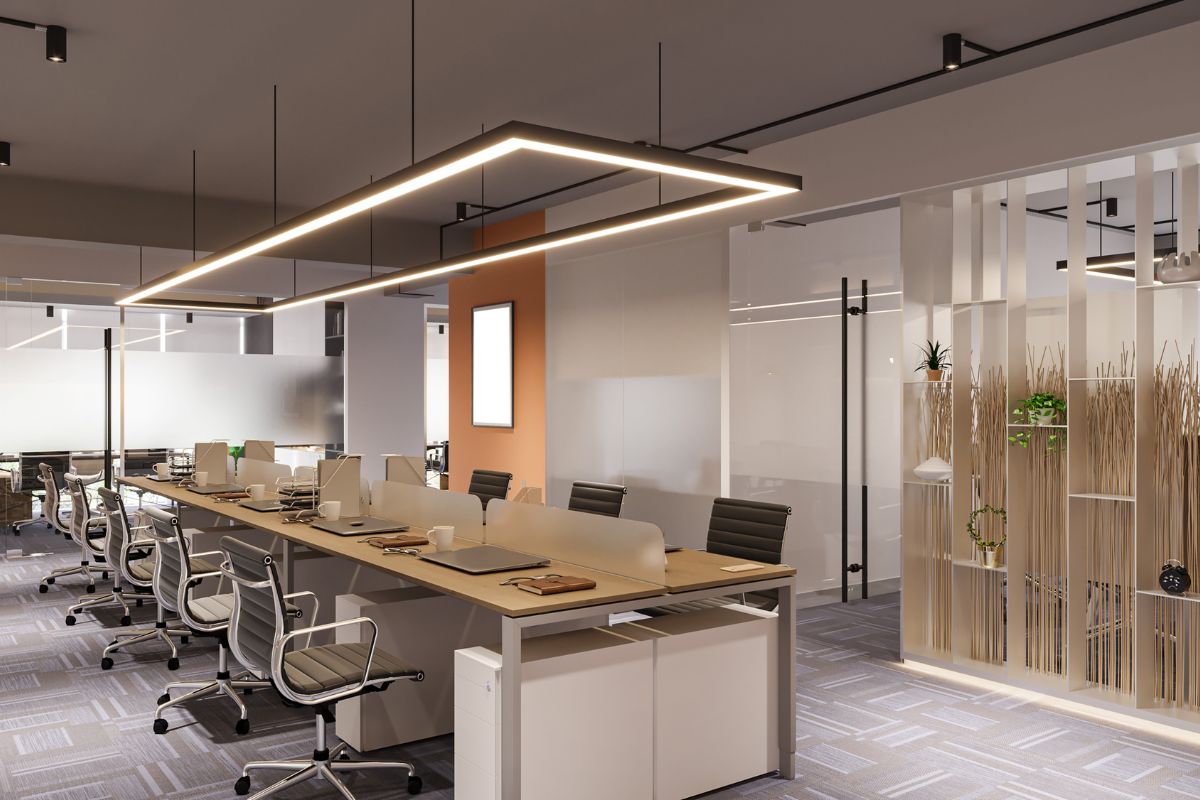
Although LED systems require higher initial investment, they reduce electricity consumption by up to 80% compared to traditional lighting. In Singapore’s climate, LED systems also generate less heat, reducing air-conditioning loads and creating additional energy savings.
Natural Light Optimisation
Cornell University research found that workers positioned near windows experienced 84% fewer symptoms of eyestrain, headaches, and blurred vision, alongside a 2% productivity increase equivalent to approximately $100,000 annual value per 100 employees.
Positioning workstations near windows, utilising glass partitions instead of solid walls, and selecting light-coloured surfaces that reflect natural illumination can dramatically improve workspace quality without electrical infrastructure changes.
Automated Lighting Controls
Motion sensors and programmable timing systems ensure lighting operates only when needed. The initial investment typically achieves payback within months through reduced energy consumption.
Technology Integration on Practical Budgets
Infrastructure Foundation
Robust wireless networking forms the foundation for modern workplace technology, supporting bring-your-own-device policies that reduce corporate hardware requirements and provide employee flexibility.
Scalable Implementation
Technology upgrades achieve better results when implemented gradually. Beginning with essential systems and adding capabilities based on actual usage patterns prevents investment in unused features and allows staff adaptation time.
The Advantages of Investing in Office Interior Design
Impact on Productivity
Research specific to Singapore workplaces demonstrates compelling returns on design investment. Gensler’s Singapore workplace survey identified focused work as the primary reason employees value office attendance, with Singapore workers particularly appreciating scheduled meetings and technology access.
Slack’s comprehensive research reveals that 82% of Singapore employees believe engagement improvements would enhance their productivity, and 54% identify flexible work arrangements as the most effective productivity enhancement.
Employee Retention Impact
Randstad’s employer brand research indicates that 69% of Singapore respondents prioritise work-life balance when evaluating potential employers. Additionally, 33% of workers report that office design influences their employment decisions.
In Singapore’s competitive talent market, employee turnover carries substantial costs, making design investment a strategic retention tool.
Talent Acquisition Advantages
The Global Human Spaces report shows that 44% of employees prioritise natural light and 20% value office plants when evaluating workplaces. In a market where 30% of Singapore companies are investing in productivity-enhancing technology, modern office design becomes a competitive advantage in attracting quality candidates.
For guidance on sustainable approaches, Greeen’s sustainable office design resource provides valuable insights. Their research on productive environment creation demonstrates that effective design can be achieved within reasonable budgets.
Frequently Asked Questions
Can improvements be implemented while maintaining normal operations?
Phased implementation during off-hours or weekends minimises operational disruption. Clear communication with staff regarding timelines and expected changes helps maintain productivity during transition periods.
What Singapore-specific regulations must be considered?
Compliance with Building and Construction Authority (BCA) guidelines is mandatory. Most Grade A buildings require adherence to Green Mark certification standards. Electrical and structural modifications require certified professionals with local regulatory knowledge.
How can ongoing maintenance costs be minimised?
Selecting durable, low-maintenance materials initially reduces long-term expenses. Plant rental services can handle greenery maintenance, while documented care procedures enable internal staff to manage basic upkeep requirements.
What options exist for tenanted spaces with modification restrictions?
Focus on removable elements: furniture, portable lighting, mobile partitions, and decorative features. Many landlords consider minor improvements that enhance property value. Note that most Singapore buildings require renovation deposits (typically equivalent to one month’s rent) before permitting modifications.
Should businesses engage professional designers or manage projects internally?
Choosing an expert for your office design is a smart move that’s about more than just a good-looking space. While it might seem tempting to mix professional advice with your own team’s work, a seasoned designer brings vital skills to the table. They understand the ins and outs of ergonomics, lighting, acoustics, and building codes, which are all crucial for a workspace that’s safe, efficient, and up to standard. Plus, they’re skilled at weaving your company’s identity into the physical layout. This not only creates a unified feel that can boost employee morale but also helps you sidestep expensive mistakes in managing the project.
Conclusion
Creating an inspiring, productive workspace in Singapore requires strategic thinking rather than unlimited budgets. The evidence consistently demonstrates that thoughtful design investments generate measurable returns through enhanced productivity, improved employee satisfaction, and reduced turnover costs.
Success lies in prioritising changes that genuinely improve workplace functionality while building improvements systematically over time. This approach allows staff adaptation while demonstrating clear value from each enhancement.
Greeen’s experienced team in office interior design specialises in delivering substantial impact within realistic budget parameters. Our proven approach helps Singapore businesses create workspaces that enhance performance whilst maintaining financial discipline.
